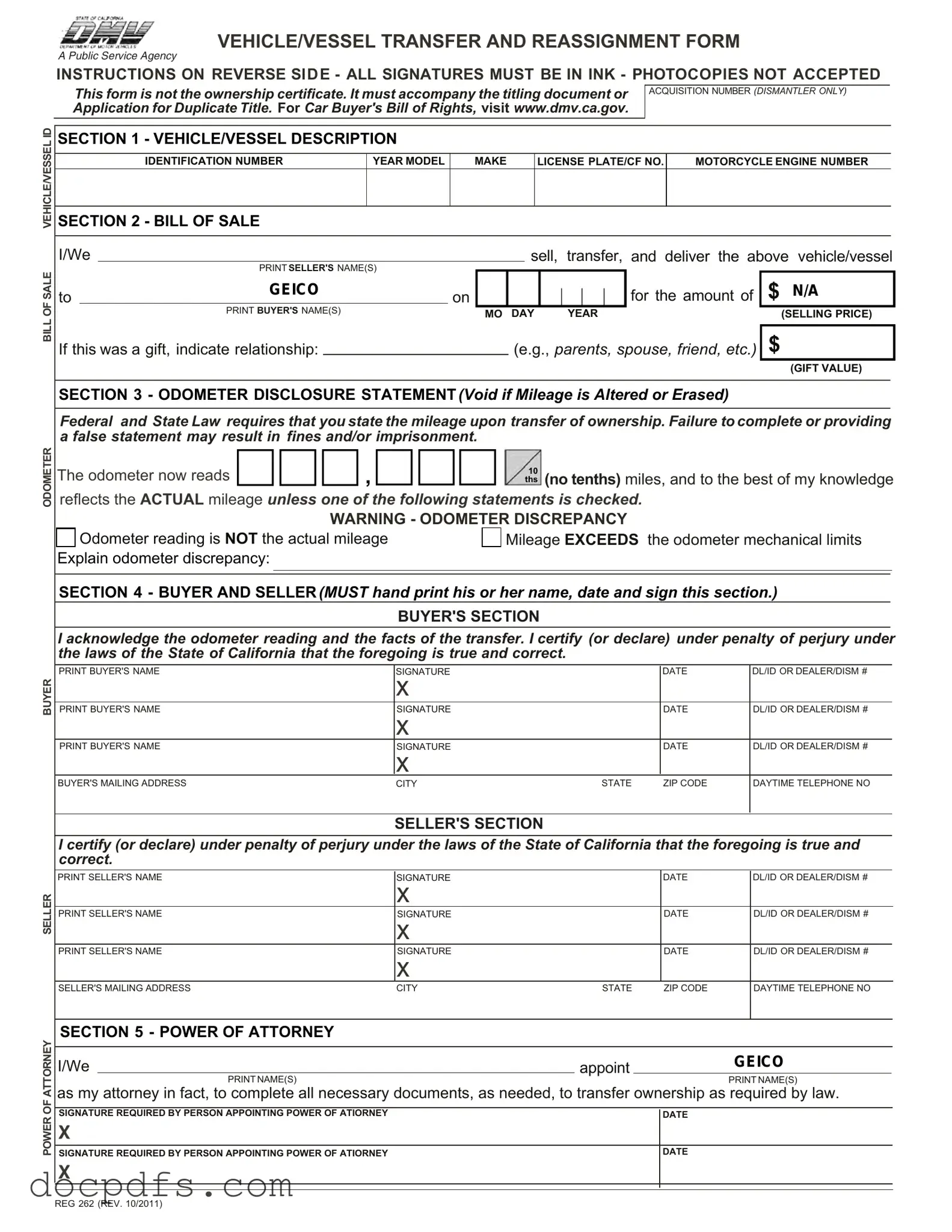The California Form REG 262, known as the Vehicle/Vessel Transfer and Reassignment Form, plays a crucial role in the transfer of ownership for vehicles and vessels in the state. This form is not a certificate of ownership; instead, it must accompany the title or an application for a duplicate title. It is essential for both buyers and sellers to understand the various sections of the form to ensure a smooth transaction. The form includes sections for vehicle identification, bill of sale, odometer disclosure, and buyer/seller information. Each section requires accurate completion to prevent any legal issues. For instance, the odometer disclosure section mandates that the seller provide the current mileage, and any alterations to this information can void the statement. Additionally, a power of attorney section allows individuals to appoint someone else to handle the paperwork on their behalf, although this cannot be used for the odometer disclosure. Understanding these components is vital for protecting the rights of both parties involved in the transfer process.
